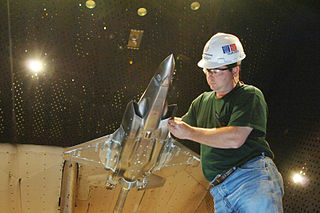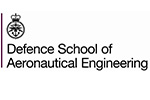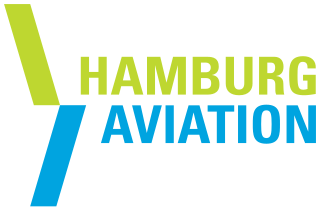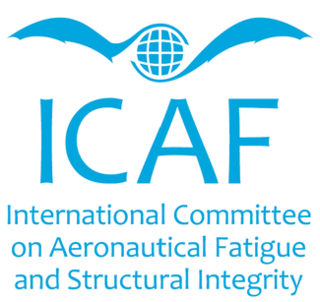 W
WThe Aeronautical Systems Center (ASC) is an inactivated Air Force product center that designed, developed and delivered dominant aerospace weapon systems and capabilities for U.S. Air Force, other U.S. military, allied and coalition-partner warfighters, in support of Air Force leadership priorities. ASC managed 420 Air Force, joint and international aircraft acquisition programs and related projects; executed an annual budget of $19 billion and employed a work force of more than 11,000 people, located at Wright-Patterson Air Force base and 38 other locations worldwide. The center was organized into wings, groups, and squadrons designed to foster synergy in the acquisition process and speed delivery of war-winning capabilities. ASC's portfolio included capabilities in fighter/attack, long-range strike, reconnaissance, mobility, agile combat support, special operations forces, training, unmanned aircraft systems, human systems integration and installation support. ASC was inactivated during a July 20, 2012 ceremony held at Wright-Patterson Air Force Base, Ohio.
 W
WThe Arnold Engineering Development Complex (AEDC), Arnold Engineering Development Center before July 2012, is an Air Force Material Command facility under the control of the Air Force Test Center (AFTC). Headquartered at Arnold Air Force Base, Tennessee, the Complex also operates from geographically separated units at Ames Research Center, Mountain View and Edwards AFB, California; Peterson AFB, Colorado; Eglin AFB, Florida; the Federal Research Center at White Oak, Maryland; Holloman AFB, Kirtland AFB, and White Sands Missile Range, New Mexico; Wright-Patterson AFB, Ohio, and Hill AFB, Utah. AEDC operates more than 68 test facilities, including, but not limited to, aerodynamic and propulsion wind tunnels, rocket and turbine engine test cells, environmental chambers, arc heaters, ballistic ranges, sled tracks, centrifuges, and other specialized test units.
 W
WChalais-Meudon is an aeronautical research and development centre in Meudon, to the south-west of Paris. It was originally founded in 1793 in the nearby Château de Meudon and has played an important role in the development of French aviation.
 W
WThe Defence School of Aeronautical Engineering (DSAE) is a Defence Training Establishment (DTEs) of the British Ministry of Defence. It was formed on 1 April 2004 and provides training for aircraft engineering officers and tradesmen across the three British armed forces. The school comprises a headquarters, No. 1 School of Technical Training and the Aerosystems Engineer and Management Training School all based at RAF Cosford, the Royal Naval Air Engineering and Survival School (RNAESS) at HMS Sultan, with elements also based at RAF Cranwell and MOD St. Athan.
 W
WThe Fédération Aéronautique Internationale is the world governing body for air sports, and also stewards definitions regarding human spaceflight. It was founded on 14 October 1905, and is headquartered in Lausanne, Switzerland. It maintains world records for aeronautical activities, including ballooning, aeromodeling, and unmanned aerial vehicles (drones), as well as flights into space.
 W
WThe German Aerospace Center, abbreviated DLR, is the national center for aerospace, energy and transportation research of Germany. Its headquarters are located in Cologne and it has multiple other locations throughout Germany. The DLR is engaged in a wide range of research and development projects in national and international partnerships. In addition to conducting its own research projects, DLR also acts as the German space agency. As such, it is responsible for planning and implementing the German space programme on behalf of the German federal government. As a project management agency, DLR also coordinates and answers the technical and organisational implementation of projects funded by a number of German federal ministries.
 W
WThe Guggenheim Aeronautical Laboratory at the California Institute of Technology (GALCIT), was a research institute created in 1926, at first specializing in aeronautics research. In 1930, Hungarian scientist Theodore von Kármán accepted the directorship of the lab and emigrated to the United States. Under his leadership, work on rockets began there in 1936. GALCIT was the first—and from 1936 to 1940 the only—university-based rocket research center. Based on GALCIT's JATO project at the time, the Jet Propulsion Laboratory was established under a contract with the United States Army in November 1943.
 W
WHamburg Aviation is the brand name of the "Luftfahrtcluster Metropolregion Hamburg e.V.", an association of companies, research institutions, educational institutions and the Free and Hanseatic City of Hamburg, with the goal of promoting the aviation industry in the Hamburg Metropolitan Region. With more than 40,000 employees in 2012, this is one of the world's largest sites in the civil aviation industry.
 W
WIndian Institute of Aeronautical Engineering & Information Technology (IIAEIT) is an aerospace engineering college in Pune, India. It also offers mechanical engineering and other technology related courses. It is known for its full-time face to face B.Tech Aerospace Engineering course (BTAE) which is jointly launched by [sandip university] (SUN) and Aeronautical Engineering and Research Organisation (AERO).
 W
WIndian Institute Of Aeronautics (IIA) is one of the oldest Aircraft Maintenance Training Institute in India, founded by Capt Ram Niwas, an avid Aviator. It was established in year 1982 at Patna and got the approval in 1983. IIA was transferred to Delhi in 2001. IIA is active in the field of Aircraft Maintenance Training through generation of trained technical manpower for the Airlines / Aviation Industry. It is under the supervision of Mr. P.K Chattopadhyay.
 W
WThe International Committee on Aeronautical Fatigue and Structural Integrity (ICAF) was initiated by Dr. Ir. Frederik Plantema, head of the Structures and Materials Department of the National Aeronatical Research Institute (NLL) in Amsterdam, the Netherlands in 1951. Dr. Plantema proposed international collaboration in the field of aeronautical fatigue in response to growing concerns regarding fatigue problems in metal aircraft structures. The first conference of the “The International Committee on Aeronautical Fatigue” ICAF was held in Amsterdam in 1952, with participants from the Netherlands, United Kingdom, Sweden, Belgium and Switzerland. ICAF soon got a remarkable influence on the fatigue research in a large part of the world by suggesting the urgent problems to be studied and joining the efforts of many laboratories in different countries. It is an informal organization that consists of the General Secretary and the National Delegates from in the meantime eightteen member countries. In 2010 the name was changed to the present one in order to clarify that the scope of the committee had broadened over the years and now also includes topics such as damage formation and growth in composite structures, structural health and loads monitoring, probabilistic modeling of structural integrity, corrosion control, etcetera. The acronym ICAF was maintained.
 W
WLuftfahrtforschungsanstalt was a secret German facility for airframe, aeroengine, and aircraft weapons testing during the Second World War. It was Germany's "most advanced and extensive [aviation] research establishment, outside of the existing Erprobungsstelle network of military aviation evaluation facilities, themselves headquartered at Rechlin.